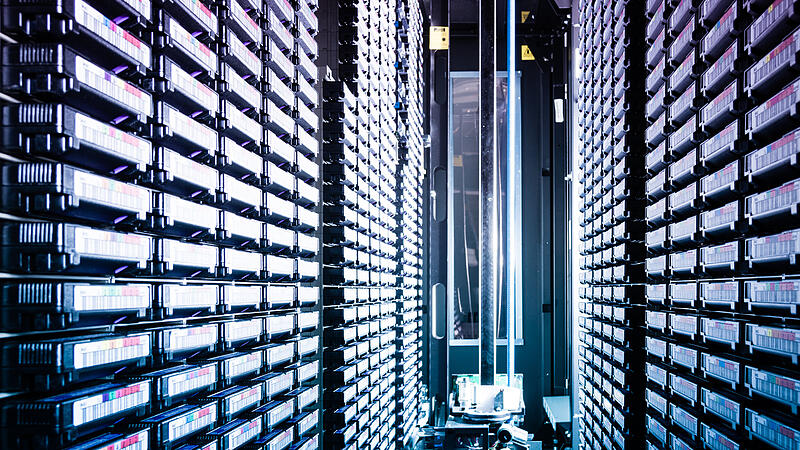Even while it was being set up, it made it into the new top 500 ranking of the world’s fastest supercomputers. The VSC-5 completes practical research applications around twice as fast as its predecessor – with less power consumption.
If one had only looked at the ranking when planning the new computer architecture, the investment of around ten million euros, which the Ministry of Education made through the performance agreements with the universities, would have put it in about 80th place, according to Herbert Störi from the department VSC Research Center of the Technical University (TU) Vienna at the opening on Friday. Of the “Vienna Scientific Cluster” is a joint project of the TUs Vienna and Graz, the universities of Vienna, Innsbruck and Linz, the University of Natural Resources and Life Sciences Vienna and recently also the University of Linz.
Significantly faster
For Störi, who after 14 years handed over the management of the VSC to Andreas Rauber (also TU Vienna) in the summer, the “list is more of sporting value”. Due to the different structure of the VSC-5, it even ranks behind its predecessor, the VSC-4, in the current supercomputer ranking. In the ranking list, which was still in the development phase, the new computer reached place 301. However, due to the larger main memory, for example, it is much faster in scientific applications.
The VSC-5 can call up more computing power in parallel, as University of Vienna Rector Heinz Engl – one of the initiators of the VSC program – put it. That’s exactly what you need when it comes to calculating large climate models – one of the many applications for which the new “high performance computing” infrastructure is needed, said the outgoing rector.
Such high computing power is now required in many research areas. For example, when it comes to analyzing which blood turbulences occur in our heart, what is happening at the atomic level in new materials or when it comes to the question of the stability of Austria’s gas storage facilities – a correspondingly current research question.
Eight million kilowatt hours of electricity a year
Closely related to this is the question of the energy consumption of the computer itself. Only on Thursday did the Austrian universities report a budget deficit of 1.2 billion euros for the performance agreement period 2022-2024, partly due to increased electricity costs. When purchasing the VSC-5, special attention was paid to energy efficiency, because the VSC infrastructure located in Vienna-Landstrasse requires around eight million kilowatt hours of electricity a year. This corresponds to about one eighth of the consumption of the entire Vienna University of Technology.
With what Minister of Education Martin Polaschek (ÖVP) calls “Austria’s most powerful supercomputer”, one can in any case face the big questions of the time even better. Even if it is sometimes “organisationally exhausting” to plan and operate such a structure as part of a university network, it pays off because “everyone can access it,” says Polaschek.
Predecessor continues to calculate
However, such investments would also entail the obligation to keep moving forward. So you are already thinking about its successor when the VSC-5 is launched. Parallel to the new mainframe, the VSC-4 will continue to be operated due to the great demand. Overall, however, such systems have a comparatively short lifetime, said Johannes Fröhlich, Vice Rector for Research and Innovation at the Vienna University of Technology.
Subsequently, the “VSC community” is to be expanded and by 2025 become the “Austrian Scientific Cluster” (ASC) with expanded locations in Innsbruck and Linz, for example. “Maybe non-federalist forces are at work here,” says Fröhlich. Most recently, the VSC network was successful as part of the “Quantum Austria” research offensive. The “MUSICA” (Multi-Site Computer Austria) project received a funding commitment of 20 million euros from the “Update of the high-performance computing infrastructure” focus of the new funding program. The goal is to set up an additional research infrastructure in this area in the coming years, which should also provide the basis for coupling with a quantum computer.
Source: Nachrichten




